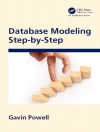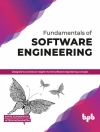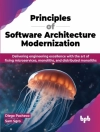This invaluable text/reference reviews the state of the art in simulation-based approaches across a wide range of different disciplines, and provides evidence of using simulation-based approaches to advance these disciplines. Highlighting the benefits that simulation can bring to any field, the volume presents case studies by the leading experts from such diverse domains as the life sciences, engineering, architecture, arts, and social sciences.
Topics and features: includes review questions at the end of every chapter; provides a broad overview of the evolution of the concept of simulation, stressing its importance across numerous sectors and disciplines; addresses the role of simulation in engineering design, and emphasizes the benefits of integrating simulation into the systems engineering paradigm; explains the relation of simulation with Cyber-Physical Systems and the Internet of Things, and describes a simulation infrastructure for complex adaptive systems; investigates howsimulation is used in the Software Design Life Cycle to assess complex solutions, and examines the use of simulation in architectural design; reviews the function and purpose of simulation within the context of the scientific method, and its contribution to healthcare and health education training; discusses the position of simulation in research in the social sciences, and describes the simulation of service systems for simulation-based enterprise management; describes the role of simulation in learning and education, as well as in in military training.
With its near-exhaustive coverage of disciplines, this comprehensive collection is essential reading for all researchers, practitioners and students seeking insights into the use of various modeling paradigms and the need for robust simulation infrastructure to advance their field into a computational future.
قائمة المحتويات
Part I: Background .- The Evolution of Simulation and its Contributions to Many Disciplines.- The Modeling and Simulation (M&S) Technology Landscape.- Part II: Engineering and Architecture .- Simulation-Based Engineering.- Simulation-Based Systems Engineering.- Simulation-Based Cyber-Physical Systems and the Internet of Things.- Simulation-Based Complex Adaptive Systems.- Simulation-Based Software Engineering.- Simulation-Based Architecture.- Part III: Natural Sciences .- Simulation-Based Science: Toward Cognitive Generative Architectures for Simulation-Driven Discovery.- Systems Design, Modeling and Simulation in Medicine.- Part IV: Social Sciences and Management .- Flipping Coins and Coding Turtles: The Evolution of M&S in the Social Sciences.- Simulation-Based Enterprise Management: Model Driven from Business Process to Simulation.- Part V: Learning, Education and Training .- Simulation-Based Learning and Education.- Simulation-Based Military Training.- Epilogue.
عن المؤلف
Dr. Saurabh Mittal is a Lead Systems Engineer/Scientist in the Architecture Analytics Department of the MITRE Corporation, USA. He is also the founder and President of Dunip Technologies, LLC and Vice President-Memberships, Society of Computer Simulation International (SCS).
Dr. Umut Durak is a Research Scientist in the Department of Flight Dynamics and Simulation of the Institute of Flight Systems at the German Aerospace Center (DLR), and an Adjunct Lecturer in the Department of Informatics at Clausthal University of Technology, Germany. His other publications include the Springer title
Distributed Simulation: A Model Driven Engineering Approach.
Dr. Tuncer Ören is a Professor Emeritus of Computer Science in the School of Electrical Engineering and Computer Science at the University of Ottawa, Canada. The legacy of his pioneering work is celebrated in the Springer title
Concepts and Methodologies for Modeling and Simulation: A Tribute to Tuncer Ören.












